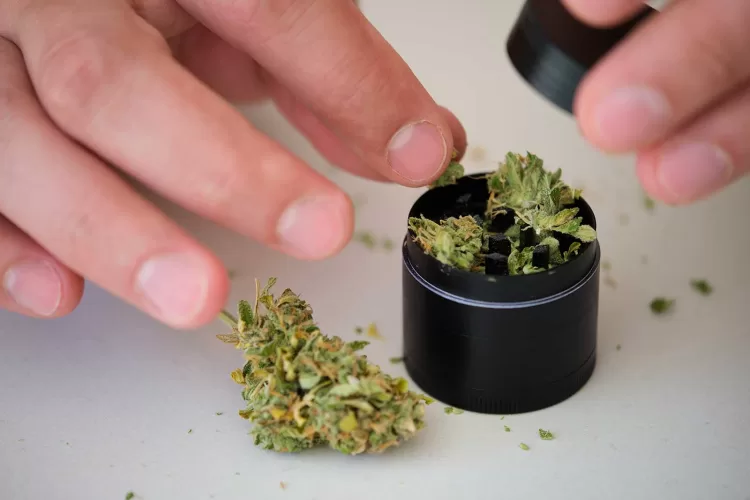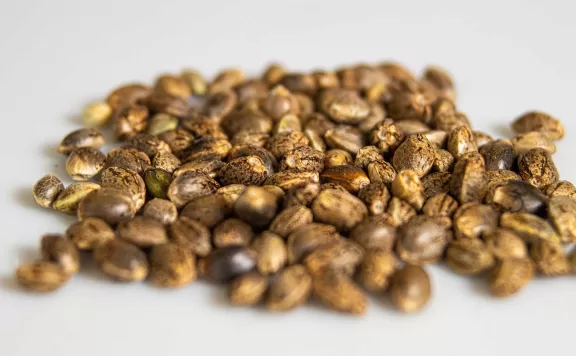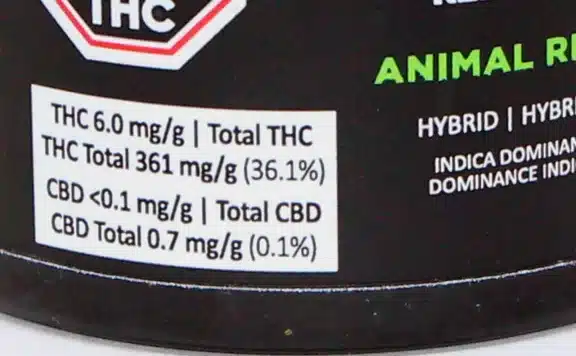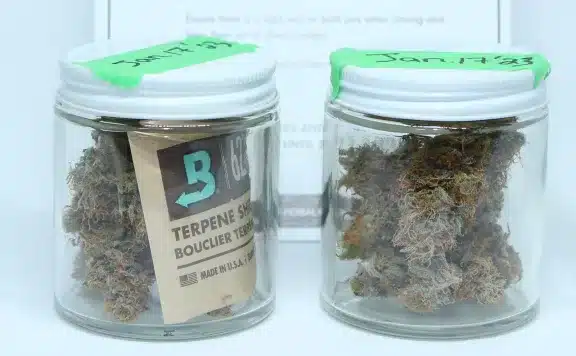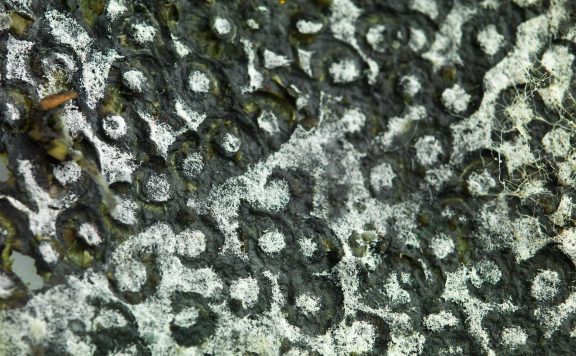From the euphoric highs to the medicinal benefits, cannabis has made its mark across cultures and eras. But for even the most casual observer, there’s one characteristic of cannabis that’s impossible to ignore: its distinctive aroma. While some strains offer sweet, floral notes or hints of pine, others are unmistakably skunky. But have you ever paused to ponder why some strains waft that characteristic skunk-like smell?
In this article, we’ll delve into the aromatic world of weed, exploring its historical roots, the science behind its scent, and the recent discovery in 2021 that finally pinpointed the molecule responsible for that signature skunky aroma.
Terpenes: Nature’s Aromatic Powerhouses
Definition and Role in Plants:
Terpenes are a vast class of organic compounds produced by various plants, not just cannabis. They play a pivotal role in the botanical world. From giving plants their unique scents to acting as natural repellents against pests, terpenes serve as both a defense mechanism and a means of communication for plants. Think of the refreshing scent of pine when you walk through a forest or the calming aroma of lavender; these are all thanks to terpenes.
Main Terpenes in Cannabis:
Cannabis boasts a rich profile of terpenes, which significantly contribute to its aroma and effects. Some of the primary terpenes found in cannabis include:
- Myrcene: Often associated with earthy and musky notes, it’s one of the most common terpenes in cannabis strains.
- Limonene: As the name suggests, limonene offers a zesty, citrus scent, reminiscent of lemons and oranges.
- Pinene: Found in strains that smell of pine or fir. As you might guess, it’s also abundant in pine trees.
- Linalool: Responsible for the floral and spicy undertones, it’s also prevalent in plants like lavender.
Diverse Aromas of Terpenes:
Each terpene has its distinctive scent, which, when combined with others, results in the vast aromatic spectrum of cannabis strains. Myrcene, for instance, can give a strain a more earthy and grounding aroma. In contrast, limonene can uplift the olfactory experience with its bright citrus notes. This diversity in terpene profiles is why some cannabis strains can remind you of a forest walk, while others might transport you to a sunny citrus orchard or a serene lavender field.
Breakthrough Discovery of 3-methyl-2-butene-1-thiol (321MBT)
For years, the unique, skunky aroma of certain strains was accepted as just one of the plant’s many mysteries. However, the year 2021 marked a turning point in cannabis research, as scientists pinpointed the exact molecule responsible for this pungent scent.
A Defining Moment in Cannabis Research:
Cannabis scientists made a significant stride in 2021, unearthing the secret behind one of the plant’s most iconic aromas. The molecule 3-methyl-2-butene-1-thiol, colloquially termed 321MBT, was recognized as the chief architect behind the skunky aroma of hemp and cannabis. This groundbreaking revelation changed the way we perceive and understand the chemical makeup of cannabis. It offered a precise scientific explanation to a phenomenon that countless enthusiasts had recognized but could never explicitly account for.
Converging Discoveries:
In a remarkable testament to the pace and enthusiasm of cannabis research, this discovery wasn’t the feat of a single group of researchers. Instead, two independent research teams almost simultaneously stumbled upon the same finding. Scientists from Abstrax Tech shared their revelation of the odor-causing compound in ACS Omega in November. Yet, in an almost serendipitous twist, another research article in ACS Omega the following month highlighted that a separate group had made a similar disclosure earlier in March of 2021.
This parallel discovery underscores the fervor of the scientific community in unraveling the mysteries of cannabis. Moreover, it exemplifies how collective efforts, even when unplanned, can lead to a deeper understanding of a subject that has piqued human interest for millennia.
Myrcene and Other Aromatic Terpenes:
The realm of cannabis aromatics isn’t limited to just the skunky notes imparted by 321MBT. In fact, the aroma of weed is woven with a myriad of terpenes, each contributing its own unique scent and effect. Among these, myrcene stands out as a particularly influential player.
The Role of Myrcene in Cannabis:
Myrcene is one of the most prevalent terpenes found in cannabis. While 321MBT might be responsible for the skunky aroma, myrcene bestows the plant with its rich, earthy undertones. The presence of this terpene can often hint at a more sedative and relaxing effect, aligning well with the grounded aroma it imparts. This is why many Indica-dominant strains, known for their relaxing properties, have a high myrcene content.
Beyond Cannabis: Myrcene in Nature:
But cannabis isn’t the sole beneficiary of myrcene’s aromatic charm. This terpene is quite the globetrotter in the botanical world.
- Mangoes: One of the most popular sources outside of cannabis. The sweet and slightly earthy aroma of a ripe mango? That’s myrcene at work.
- Lemongrass: Used extensively in Asian cuisines and as a therapeutic essential oil, lemongrass owes its distinct scent to myrcene among other compounds.
- Hops: Beer enthusiasts might be intrigued to know that the hoppy aroma in many beers can be attributed to myrcene.
- Bay leaves, wild thyme, and parsley: These culinary herbs, often used to impart depth to dishes, also contain notable amounts of myrcene.
The rich aromatic profile of cannabis is a symphony of various terpenes, with each having its own part to play. While 321MBT has clarified the mystery behind the skunky aroma, terpenes like myrcene ensure that the world of cannabis remains varied, intriguing, and full of surprises.

Evolutionary Advantage: The “Why” Behind Cannabis’ Distinctive Aroma
Mother Nature is an exceptional designer, always ensuring that her creations have a purpose, a reason for being the way they are. The skunky aroma of cannabis, while enjoyed and sought after by many today, was likely not developed with human connoisseurs in mind. So, why did the cannabis plant evolve to produce such a distinctive and potent aroma?
Natural Defense and Communication:
- Deterrence for Herbivores: Just as thorns on a rose bush deter animals from munching on them, the strong aroma of cannabis might have evolved as a repellent. Herbivores, upon getting a whiff of the strong, skunky aroma, could associate it with a plant that’s not palatable or even potentially harmful.
- Attracting Pollinators: On the flip side, while the aroma might repel some creatures, it could also attract others. Certain insects might be drawn to the scent, aiding in the pollination process and ensuring the continuation of the species.
- Inter-Plant Communication: Some studies on plants suggest that they can “communicate” with each other through volatile organic compounds. The aromatic terpenes released by cannabis could play a role in this intricate botanical signaling system, warning neighboring plants of potential threats or changing environmental conditions.
Drawing Parallels with the Skunk:
Much like cannabis, skunks have their own aromatic signature – a smell that’s instantly recognizable and often dreaded. But for the skunk, this scent isn’t about making a statement; it’s a matter of survival. When threatened, skunks release a foul-smelling spray, a potent concoction designed to deter and repel predators. It’s a clear message: “Stay away if you know what’s good for you.”
Cannabis, in its own way, may have evolved its distinctive aroma as a similar kind of message to potential threats, while also beckoning allies in the form of pollinators.
Closing Thoughts:
Evolution is a dance of adaptation and survival. Every trait, every aroma, has a story – a tale of nature’s ingenuity in ensuring that a species not only survives but thrives. The skunky aroma of cannabis is but a chapter in the millennia-long journey of this versatile plant, a testament to its resilience and adaptability.
References and further reading
“Skunky” Cannabis and Odor Troubleshooting:
- Koziel, J. A., Guenther, A., Vizuete, W., Wright, D. W., & Iwasinska, A. (2021). “Skunky” Cannabis: Environmental Odor Troubleshooting and the “Need-for-Speed”. ACS Omega. Link
Myrcene and other Terpenes:
- Booth, J. K., Page, J. E., & Bohlmann, J. (2017). Terpene synthases from Cannabis sativa. PloS one, 12(3), e0173911.
Evolutionary Advantage:
- Karban, R., Yang, L. H., & Edwards, K. F. (2014). Volatile communication between plants that affects herbivory: a meta-analysis. Ecology Letters, 17(1), 44-52.

